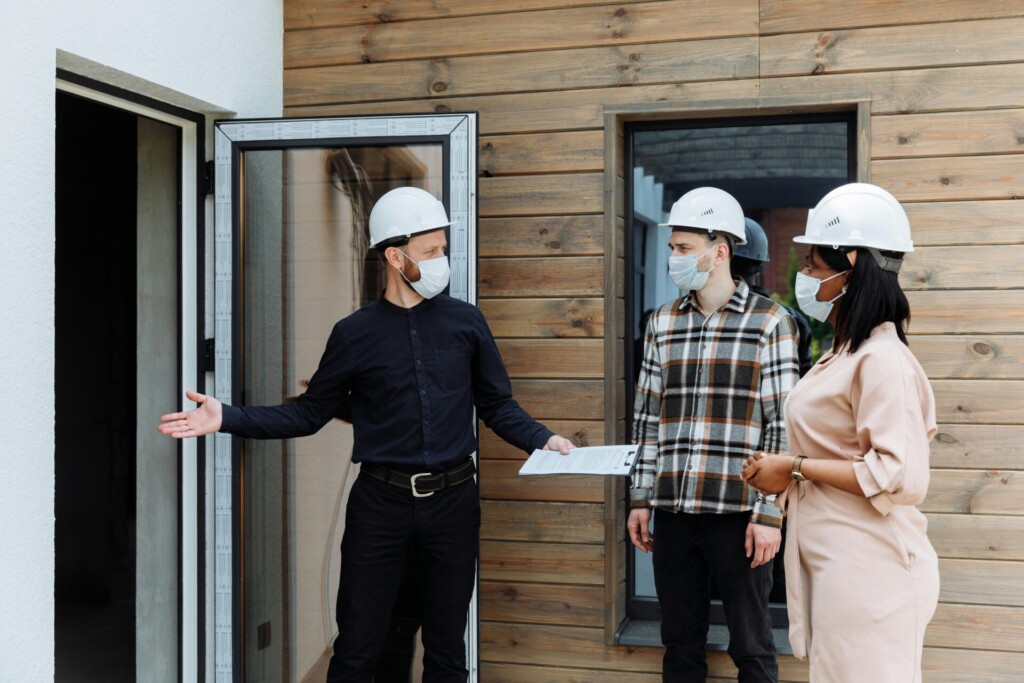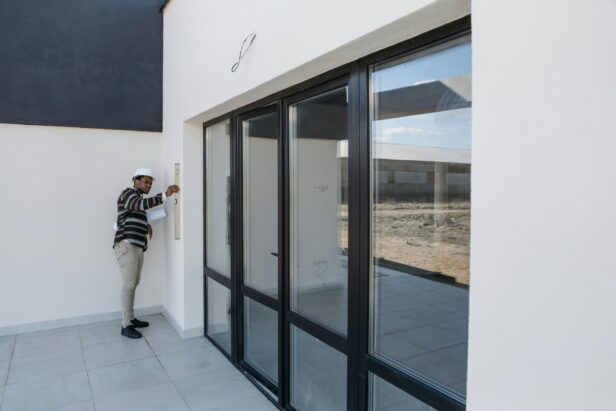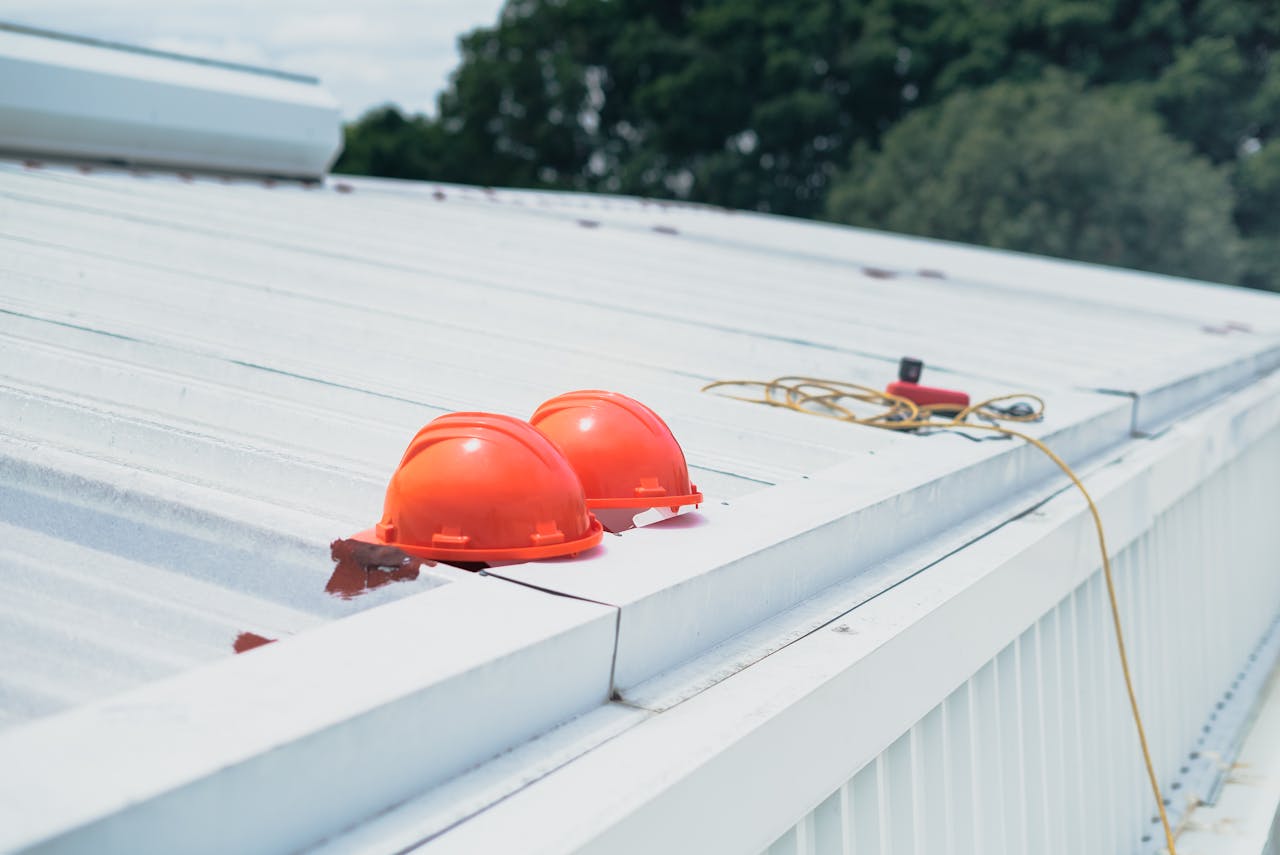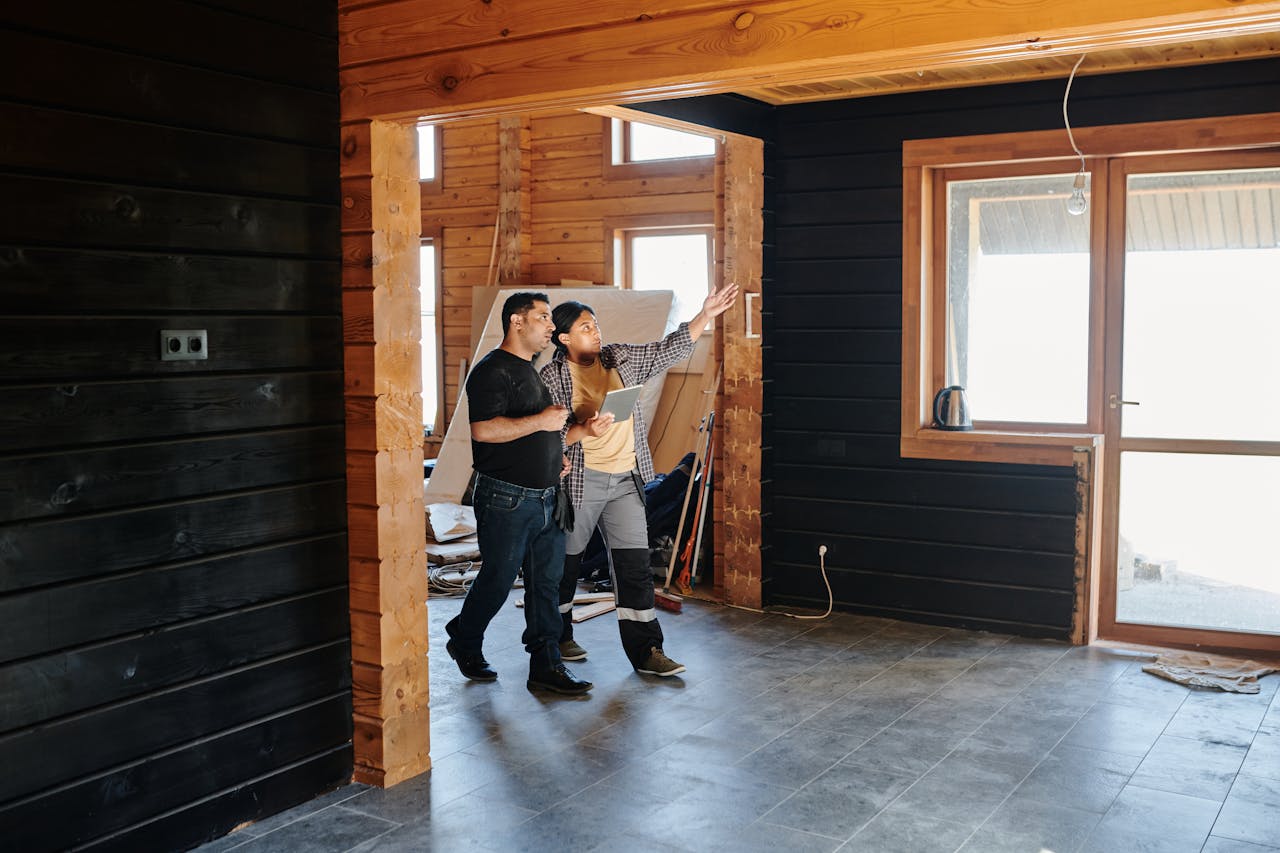Retail store renovation demands more than just aesthetic updates. A store renovation contractor specializes in transforming commercial spaces to enhance customer experience and drive sales growth through strategic layout improvements and modern design implementations.
We coordinate every phase from initial consultation through project completion. This comprehensive approach includes developing design blueprints, managing pre-construction logistics, obtaining permits, and executing the build-out while maintaining operational continuity during construction phases.
What Should You Clarify Before Starting A Retail Remodel?

Retail remodel planning requires decision-making across several key areas before construction begins. We organize these decisions around project goals, technology requirements, spatial design, accessibility standards, material selection, and brand continuity. Each element affects construction feasibility and operational success during the build-out process.
Define Project Goals And Renovation Purpose
Clear renovation objectives drive every design and construction decision that follows. Property owners need specific reasons for the remodel, whether that involves increasing sales per square foot, modernizing customer experience, or adapting to new merchandise lines. We work with clients to establish measurable goals that inform space allocation, fixture selection, and timeline priorities.
Goal clarity also determines renovation scope and phasing strategies. A remodel focused on brand refresh requires different electrical wiring and lighting plans compared to a layout optimization project. When objectives remain vague, construction costs escalate through change orders and extended timelines.
Assess Technology Infrastructure And Electrical Capacity
Modern retail operations depend on robust electrical systems that support point-of-sale devices, inventory scanners, security equipment, and customer-facing technology. We evaluate existing electrical capacity and plan new outlet locations based on anticipated device loads and staff workflow patterns. Tablet stations, mobile payment systems, and digital displays each require specific power and data connections.
Technology needs also influence construction scheduling and phasing decisions. Electrical wiring updates often require temporary power shutdowns that affect ongoing operations. We coordinate these utility interruptions with store hours and peak sales periods to minimize revenue impact during construction.
Review Floor Plan For Traffic Flow And Flexibility
Effective retail layouts guide customer movement while maintaining operational efficiency for staff and inventory management. We analyze existing traffic flow patterns and identify bottlenecks or underutilized areas that construction can address. Flexible layout designs accommodate seasonal merchandise changes and future business growth without major reconstruction.
Plumbing and electrical infrastructure changes become more complex when stores remain open during renovation. We recommend limiting major utility relocations unless absolutely necessary for the business model. Strategic fixture placement can often achieve layout goals without extensive infrastructure work.
Plan ADA Compliance And Accessibility Features
Retail remodels must meet current accessibility standards, which often exceed the requirements in place when the original space was built. We incorporate ADA elements including wider walkways, accessible bathrooms, proper door hardware, and wheelchair ramps where elevation changes exist. These features require specific clearances and construction details that affect overall space planning.
Accessibility compliance also influences material selection and fixture specifications. Flooring transitions, counter heights, and display case designs must accommodate customers with various mobility needs. We integrate these requirements into the construction documents rather than treating them as add-on features.
Select Green Materials That Support Durability
Sustainable building practices in retail construction focus on material longevity and indoor air quality rather than just environmental impact. We recommend green materials that withstand heavy foot traffic while reducing maintenance requirements over time. Low-VOC finishes, recycled content flooring, and energy-efficient lighting systems provide operational benefits beyond sustainability goals.
Durable green materials also support faster construction schedules since they often require fewer protective coatings and finishing steps. Material accessibility affects project timelines, so we confirm availability and lead times for sustainable products during the planning phase.
Protect Brand Identity Through Design Continuity
Successful retail remodels maintain recognizable brand elements while updating the overall customer experience. We identify existing colors, materials, and design features that customers associate with the brand, then incorporate these elements into the new construction. This approach reduces customer confusion during and after the renovation process.
Brand continuity also affects material specifications and finish selections throughout the construction process. Custom millwork, specialized lighting, and unique fixtures often require longer lead times that influence project scheduling. We coordinate these brand-specific elements with the overall construction timeline to avoid delays.
How Does The Retail Renovation Process Typically Work?
The renovation process unfolds through distinct phases that build on each other systematically. Each stage requires careful coordination to keep projects moving forward while maintaining quality standards. We structure the process to minimize surprises and deliver predictable outcomes for property owners and developers.
Consultation And Planning
We begin by clarifying your objectives and identifying site constraints that could affect the scope. This phase examines existing conditions, reviews lease agreements, and establishes renovation parameters. Our team evaluates structural limitations, building systems, and any regulatory requirements that will shape the project approach.
Constraint analysis covers everything from load-bearing walls to utility access points. We document existing infrastructure conditions and assess what modifications are feasible within your budget and timeline. This groundwork prevents costly discoveries later in the process.
Design And Blueprints
The design phase produces schematic drawings that translate your vision into buildable plans. We develop preliminary layouts first, then refine them into detailed construction documents. This process includes mechanical, electrical, and plumbing coordination to ensure all systems work together effectively.
Final drawings specify materials, finishes, and installation methods. We coordinate with engineers and specialty consultants as needed to address complex systems integration. These documents become the roadmap for permits and construction execution.
Budgeting And Cost Estimation
We produce comprehensive cost estimates that break down materials, labor, and project management fees. This includes value engineering options that help optimize the budget without compromising essential functionality. Cost controls are built into the process to manage expenses and reduce change order risks.
Our estimates account for permit fees, utility connections, and any temporary measures needed during construction. We present options at different investment levels so you can make informed decisions about scope and finishes.
Pre-Renovation Logistics
Permits represent a critical milestone that determines when construction can begin. We manage the application process and coordinate inspections to keep the schedule on track. Phasing strategies minimize operational disruption by sequencing work around your business requirements.
Safety controls and site preparation are established before any construction activity starts. We schedule work during low-traffic hours when possible and establish protocols for protecting active retail areas. Subcontractor coordination ensures all trades understand the project timeline and quality expectations.
Material procurement and delivery schedules are coordinated to support the construction sequence. We arrange for secure storage and establish site access procedures that protect both the work area and ongoing business operations.
Renovation And Project Management
Construction follows block schedules that group related activities for maximum efficiency. We coordinate trades to prevent conflicts and maintain steady progress through each phase. HVAC, electrical, and plumbing updates are sequenced to minimize system downtime.
Quality monitoring happens throughout construction to ensure work meets specifications and building codes. We conduct regular inspections and maintain detailed progress documentation. Change order management keeps the project on budget while accommodating necessary adjustments.
Our project management approach emphasizes communication and problem-solving. Weekly progress meetings keep all stakeholders informed and address any issues before they impact the schedule.
Tenant Build-Out Terms
Property owners must decide between turnkey delivery and tenant-managed scope before finalizing design and permits. Turnkey approaches put the landlord in control of the entire process, while tenant-managed projects give businesses more direct oversight of contractor selection and execution.
These decisions affect project financing, timeline, and quality control procedures. We work with both models and can adapt our approach based on lease terms and tenant preferences. Clear agreements about scope, standards, and approval processes prevent misunderstandings during construction.
Design-build delivery can streamline the process by combining design and construction under single-source responsibility. This approach often reduces project duration and provides better cost predictability for complex retail renovations.
What Costs And Timelines Should You Expect?

Retail renovation costs average around $200 per square foot. This includes materials, labor, and design work combined into the total investment.
Design fees typically represent 20% of your overall project budget. We factor this into early cost planning to avoid surprises during development.
Project timelines depend heavily on scope. Extensive renovations requiring permits and structural changes can take up to eight months from initial design through final build-out. Light updates such as new flooring and fresh paint may wrap up in just a few weeks.
Primary Cost Drivers
Materials form the largest expense category in most retail renovations. Quality flooring, fixtures, and finishes directly impact the budget. Labor costs follow closely behind, particularly for specialized trades.
Lighting upgrades and electrical work add significant expense when you need enhanced capacity or new circuits. Utility changes for HVAC, plumbing, or technology infrastructure create additional budget requirements.
Permits and inspections contribute to both cost and timeline. We coordinate these early to prevent delays and unexpected fees.
Renovation Versus New Construction
Renovating existing retail space generally costs less than building new. We work within established structural frameworks, reducing complexity and material requirements. Existing utility connections and basic infrastructure lower overall investment needs compared to ground-up construction.
How Can A Store Renovation Contractor Reduce Disruption And Boost Results?
We schedule construction work during off-hours and weekends to minimize business interruption. Fast-track scheduling breaks the project into focused blocks that complete in sequence, reducing overall timeline and keeping disruption contained to specific areas.
Value engineering helps us identify where to optimize materials and methods without sacrificing quality. We evaluate each component’s function and find alternatives that deliver the same performance at lower cost or faster installation.
Cost controls prevent scope creep and change orders that can derail timelines and budgets. We establish clear parameters upfront and monitor expenses throughout construction to maintain financial discipline.
Safety And Work Zone Management
We maintain clean, safe work areas with proper barriers between active construction and operational retail space. Clear signage directs customers around work zones while dust control and noise management protect the shopping environment.
Safety protocols include proper equipment storage, debris removal, and coordination with store staff to prevent accidents. These procedures protect customers and workers while demonstrating professionalism that reflects well on the business.
Strategic Space Planning
Every square foot gets planned for maximum functionality and product visibility. We analyze traffic flow patterns to position high-margin items in prime locations and create clear sightlines that guide customers through the space.
Sustainable materials offer long-term benefits through reduced maintenance and energy efficiency. LED lighting systems, durable flooring options, and efficient HVAC components cut operational costs while meeting environmental goals.
Brand Identity And Flexible Design
Storefront upgrades and interior refreshes strengthen brand recognition and attract target customers. We coordinate colors, finishes, and design elements that align with brand standards while creating contemporary appeal.
Flexible layouts accommodate changing inventory needs and seasonal variations. Modular fixtures and adaptable storage systems allow easy reconfiguration without major construction work. This approach protects the investment by extending the renovation’s useful life as business needs evolve.
We integrate these methods into comprehensive project schedules that balance efficiency with quality outcomes. Block scheduling coordinates trades to minimize conflicts while maintaining progress momentum throughout the renovation.
Conclusion And Next Steps

Successful retail remodels start with clear goals, smart space planning, and a defined process. We approach each project by establishing design planning priorities, securing permits early, and maintaining operational continuity throughout construction. These elements reduce surprises and keep your business running smoothly during renovations.
Budget around $200 per square foot for most retail renovations, with design fees typically representing 20% of the total investment. Timelines vary from a few weeks for simple updates to several months for comprehensive remodels. Value engineering during the planning phase helps balance costs with functionality while phased work protects daily operations from extended disruptions.
For your next retail remodel, begin by defining clear objectives and gathering existing drawings of your space. Set a realistic budget range based on your renovation goals and timeline requirements. Schedule these initial steps with a store renovation contractor at EB3 Construction to align your vision with proven construction practices.




